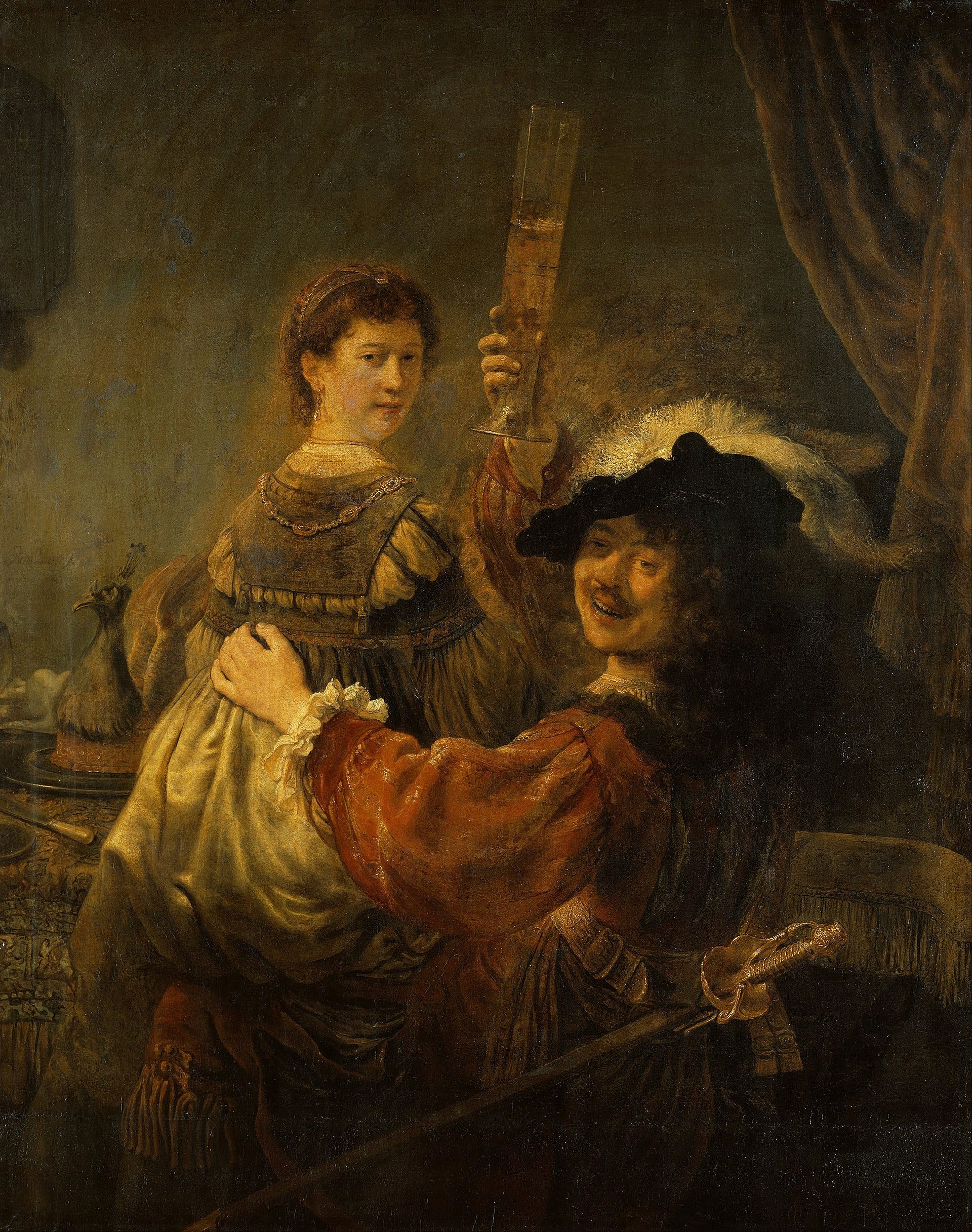This article delves into Rembrandt’s masterpiece, The Return of the Prodigal Son, exploring its artistic brilliance, emotional depth, and enduring message. Housed in the Hermitage Museum, this painting, created during Rembrandt’s later years (c. 1667-1669), is considered one of the greatest ever painted, capturing a profound moment of forgiveness and reconciliation. While depicting a biblical scene, the artwork is imbued with Rembrandt’s personal experiences and emotional depth, exploring themes of loss, redemption, and the complex relationship between father and son.
The Power of Forgiveness Visualized
Imagine encountering The Return of the Prodigal Son in person. The dimly lit room, the soft light bathing the canvas, draws you into a scene of intense human drama. A young man, dressed in rags, kneels before an older man. This is the prodigal son, returned home after squandering his inheritance. His posture—head likely shaved, body bowed—speaks of humility, regret, and a desperate plea for acceptance. His journey, his mistakes, his hardships – they’re all palpable in his demeanor.
The father, the true heart of the painting, embodies unconditional love and forgiveness. His hands rest gently on the son’s shoulders, a tender embrace that transcends words. His face, partially obscured by shadow, suggests profound compassion and the overwhelming joy of reunion. This embrace is not merely physical; it’s a spiritual reunion, a powerful depiction of grace that resonates deeply. He welcomes back the son he thought he’d lost, representing God’s boundless love and mercy. To learn more about the saucy story of politics and romance, check out this article about the Peggy Eaton Affair.
Unraveling the Mystery of Rembrandt’s Connection
While the painting’s title points to the biblical narrative, many art historians believe it goes beyond a simple retelling. They see it as a window into Rembrandt’s own soul, a powerful expression of his personal struggles and hopes. Rembrandt, like many of us, faced financial ruin and personal tragedies. These experiences likely shaped his interpretation of the prodigal son’s story. Did he see himself in the wayward son, returning home humbled and seeking forgiveness? This theory transforms the artwork from a depiction of a biblical event into something deeply personal and relatable, exploring themes of regret, the need for acceptance, and the hope for a fresh start. Moreover, for those interested in the legend of Pizarro’s Gold, it is a must-read.
Adding to the intrigue is the question of Rembrandt’s presence within the painting. Some scholars suggest he’s present, not as the prodigal son, but perhaps as one of the onlookers in the background, observing this scene of forgiveness and reconciliation. This possibility adds another dimension, allowing viewers to engage even further with the artist’s potential self-reflection.
Deciphering the Characters and Their Significance
The scene is more than just the father and son. The older brother, standing off to the side, adds another layer of complexity. His reaction is ambiguous. Is it resentment, contemplation, or perhaps even eventual forgiveness? His presence introduces the realistic nuances of family dynamics and the varied responses to repentance and reconciliation. The painting also features secondary figures, whose identities remain a topic of debate among art historians. Are they family members, servants, allegorical figures, or simply onlookers? Their presence enriches the narrative, creating a sense of community and shared experience. Each face in the background invites the viewer to ponder their connection to the unfolding drama.
Rembrandt’s masterful use of light and shadow (chiaroscuro) enhances the emotional power. Light bathes the prodigal son and his father, symbolizing redemption, while the surrounding figures remain partially obscured, reflecting more complex feelings. This interplay of light and dark further underscores the intricacies of human relationships and the inner struggles associated with forgiveness.
The Enduring Message of Hope and Redemption
The Return of the Prodigal Son isn’t just a beautiful painting; it’s a timeless masterpiece that continues to resonate with viewers centuries later. It speaks to universal themes of love, loss, repentance, and the enduring power of forgiveness, acknowledging the challenges of reconciliation within families. While rooted in a specific biblical parable, the painting transcends religious boundaries, tapping into shared human experiences. It invites contemplation, prompting reflection on our own experiences of forgiveness, both giving and receiving. The true magic lies in the questions it raises and the emotions it evokes. It reminds us that even when we stumble, there is always hope for redemption and reconciliation.
Key Points:
- Masterful Artwork: The Return of the Prodigal Son depicts a poignant biblical tale of forgiveness and acceptance during the Dutch Golden Age.
- Emotional Narrative: The painting portrays the son’s return, filled with humility and regret.
- Compassionate Father: The father’s ungrudging love represents unconditional love and grace.
- Chiaroscuro Technique: Rembrandt’s use of light and shadow amplifies the emotional intimacy and drama.
- Human Condition: The painting probes universal themes of mistakes, redemption, and love’s power.
Important Details:
- Painting Title: The Return of the Prodigal Son (Dutch: De terugkeer van de verloren zoon)
- Artist: Rembrandt van Rijn
- Date: c. 1667-1669
- Location: Hermitage Museum, St. Petersburg, Russia
- Subject Matter: The biblical parable of the Prodigal Son (Luke 15:11-32)
- Key Figures: The Prodigal Son, the Father, the older brother, and secondary figures.
- Artistic Style: Baroque, with dramatic chiaroscuro, emotional intensity, and realistic detail.
- Key Elements: The embracing father, the kneeling son, the observing brother, and the use of light and shadow.
The painting’s enduring power lies in its emotional depth, conveyed through Rembrandt’s masterful use of chiaroscuro and the expressive gestures of the figures. Art historians debate the identities of the individuals depicted, with some suggesting they represent archetypal human experiences. While not a literal self-portrait, the painting may reflect Rembrandt’s own life experiences. This painting offers a profound visual meditation on compassion and familial love. More than a depiction of a biblical parable, it’s an invitation to confront our own capacity for giving and receiving unconditional love. The ambiguity of the scene, with its uncertain future and varied reactions from onlookers, adds to its power. This allows viewers to engage with the story on a personal level, reflecting on themes of forgiveness, jealousy, and reconciliation. and the complexities of human relationships.
- Unveiling the Enigma: Mansoureh Khojasteh Bagherzadeh’s Public Appearances & Private Life in Iran - July 18, 2025
- Unveiling the Mystery: Mansoureh Khojasteh Bagherzadeh’s Husband: A Rare Glimpse into a Private Life - July 18, 2025
- Unveiling Masoud Khamenei’s Mother: Power, Influence, and Iran’s Future - July 18, 2025

















1 thought on “Rembrandt’s Return of the Prodigal Son Painting: A Powerful Story of Forgiveness and Redemption”
Comments are closed.